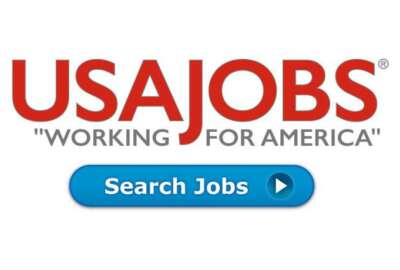
OPM pushes for more targeted recruitment, as HR community bemoans USAJobs
The federal human resources community suggests agencies change their approach to hiring. Rather than hedge their bets that USAJobs.gov will help them identify a...
Agencies have 164 different authorities they can use to hire a new employee to the federal government. But few of those hiring appointments are helping agency managers identify talent that meets the minimum qualification standards — let alone a pool of new, young and diverse applicants.
The federal human resources community, including the Office of Personnel Management and Congress, acknowledges that there’s no quick fix to numerous problems with the policy, business and technology in the federal hiring process.
But OPM says agencies can change their overall approach. Rather than hedge their bets that posting to USAJobs.gov will help them find the best possible candidates, agencies should constantly target and reach out to specific groups of talented individuals.
Now, agencies adopt a “post and pray” mentality when they add job announcements to USAJobs.gov, said Linda Brooks Rix, president and co-CEO of Avue Technologies Corporation, which runs its own federal jobs portal.
“You should always be recruiting,” Rix told the Senate Homeland Security and Governmental Affairs Committee at an April 12 roundtable on USAJobs. “You should never stop. Because what this is a stop-start, stop-start. In the National Park Service … let’s just say I need 2,000 air conditioning mechanics. You should have one posting. You should always be taking applications.”
Problems with USAJobs, which Partnership for Public Service President Max Stier described as the “front door to a crumbling edifice” of a broken federal hiring process, have been well documented.
OPM is in the midst of a series of incremental updates to the job portal. The first iteration of improvements came out in February, and the agency plans to unveil more throughout the year.
But the problems raised by Rix, Stier and members of the committee suggest deeper challenges that a visual redesign can’t address.
USAJobs applicants have said they often don’t receive a quick response from a hiring manager and are unsure when the agency actually plans to hire. Instead, candidates apply to several more postings on USAJobs or withdraw their applications altogether for a faster response from the private sector.
“There should be active communication that says, ‘Here’s when we’re going to hire. We just hired 200. It looks like we’re going to hire another 200 in the second quarter. Hang in there. If you want your application to stay active, keep it active,'” Rix said.
OPM estimates it should take roughly 80 days for an agency to hire a new employee, said Mark Reinhold, the agency’s associate director for employee services and chief human capital officer.
But agencies who constantly recruit and communicate their hiring plans to the applicants will open up the doors to more qualified candidates, Rix said.
Agencies received roughly 22 million applications through USAJobs in 2015, Reinhold said.
“To me that’s a pretty good news story, 22 million, that is a large volume of applications,” he said.
But agency hiring managers overall haven’t been happy with the quality of applicants they receive. Rix said many don’t meet the minimum job qualification standards, which OPM writes.
“When a hiring manager is given a certificate of eligibles or a referral list of candidates that have been rated and ranked to hire from, we have seen cancellation rates as a high as 70 percent in agencies,” she said. “The reason is because those hiring managers do not believe that the candidates on the list are in fact qualified.”
Hiring managers’ overall satisfaction with the quality of their applicants sits at 61 percent, according to a first-quarter update on Performance.gov , a 2 percent increase from the previous quarter.
Rix also suggested OPM get rid of the USAJobs exclusivity mandate, which requires that agencies only use a federal job portal like USAJobs to post new opportunities.
“Job boards like USAJobs are not where millennials go, and they’re not where people generally go when they’re looking to apply for positions,” she said. “Today, it’s all social media. It’s all LinkedIn.”
An emphasis on diversity
This kind of targeted approach to hiring also applies to the administration’s push to diversify the federal workforce. Acting OPM Director Beth Cobert described diversity and inclusion has a “must-have” priority for her and the administration.
“It’s critical because we need to do this to get the talent we need in the federal government,” Cobert said during an interview with reporters after her speech at OPM’s Collaboration and Innovation Summit in Washington April 12. “We need those perspectives and frankly, we need a lot of great people and we’re not going to get them if we’re not reaching out to diverse communities.”
OPM launched the Hiring Excellence campaign earlier this year, which is designed to help HR and hiring managers better understand the resources and authorities they already have to hire more qualified people.
Cultivating a more diverse federal workforce means first getting buy-in from agency leadership and then collecting, evaluating and using measurable data to reach out to specific groups of people, Cobert said.
For example, OPM found that many young people, especially those at historically black colleges and universities, didn’t know about the President’s Management Fellows program and other routes to the federal workforce.
“[We’ve been talking] about how we can better let students know about these opportunities, know that their skills will be valued and understand how they can connect from that interest to a career in federal service,” Cobert said during her speech.
To help bridge that information gap, every major university should have its own government public information officer who can actively market federal jobs and internships to qualified students and help them through the application process, Rix suggested.
Creating a more diverse workforce also means gathering input from everyone — even the quiet people in the room — and integrating their input into agency action plans, Cobert said. That kind of action will take sizable shift in mindset.
“We know that if we have more diverse talent and when we capitalize on their input, we will get better results,” she said. “It’s only when people make that linkage, when there’s a full understanding that diversity is not an add-on to your mission, it is critical to your mission that we will get the transformation that we need.”
Copyright © 2025 Federal News Network. All rights reserved. This website is not intended for users located within the European Economic Area.
Nicole Ogrysko is a reporter for Federal News Network focusing on the federal workforce and federal pay and benefits.
Follow @nogryskoWFED




